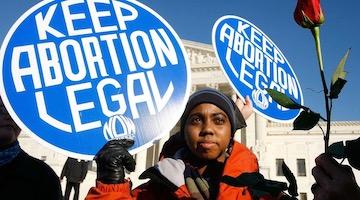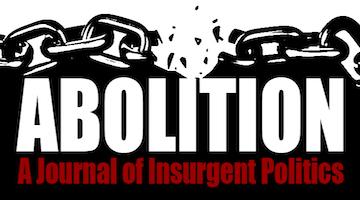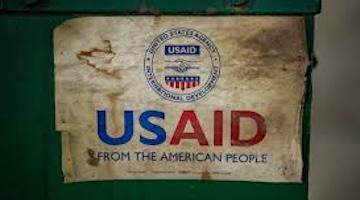Society needs prison abolition in order to heal, but people living in prison need basic humane conditions in order to survive.”
“The experiences of the people caged in women’s prisons tend to be the most under-reported and invisible.”
In this feature, we ask abolitionists a few questions about their work.This week’s featured activist is Diana Block. Block is a founding member of The California Coalition for Women Prisoners (CCWP) and is a current Advisory Board member.
Roberto Sirvent: Can you please tell readers of the Black Agenda Report a little about your background and the work you do?
Diana Block: The California Coalition for Women Prisoners (CCWP) was founded in 1995 by women prisoners and their advocates. One of our founding members was a Black woman, Charisse Shumate,with sickle disease who dared to challenge the abusive health care that she and others were receiving in prison. Throughout our history, CCWP has been committed to challenging the institutional violence imposed on women, transgender people and communities of color by the prison industrial complex (PIC). We center the struggle for racial and gender justice and we prioritize the leadership of the people, families and communities most impacted by the PIC in building this movement. Our visiting program at the women’s state prisons is at the core of all our work. Our programs evolve in response to the guidance and insights of the people we visit and the changing conditions within the prisons and jails. Within that framework our programs fall into four major areas. First, we monitor and challenge the abusive conditions inside of the women’s prisons, including grossly inadequate health care, sexual harassment and abuse, solitary confinement and overcrowding. Second, we fight for the release of women, trans and gender non-conforming prisoners through individual advocacy and systemic reforms of parole and sentencing systems, including the extreme sentence of Life Without Parole (LWOP). Third, we support women and trans people in their process of re-entering the community upon release so they are able to survive, grow and become involved in the struggles for civil rights and social change. Fourth, we work in coalition with others to promote decarceration strategies, shifting state and local priorities away from incarceration and punishment towards education, employment, housing and overall social transformation.
Are there any under-reported stories in your community involving prisons, police, or law enforcement that you’d like to share?
The experiences of the people caged in women’s prisons tend to be the most under-reported and invisible. For example, through CCWP’s visiting program at the California Institution for Women (CIW), we realized a few years ago that the suicides occurring amounted to an epidemic. The prison authorities first ignored and then tried to cover up the tragic reality that suicides at CIW were occurring at eight times the national rate for women’s prisons nationwide. Through our work with family members of those who had died we were able to mount a multi-pronged campaign. Finally in 2016 a legislator called for a state audit of suicide prevention practices and the audit, released in summer of 2017, corroborated our findings and recommended many policy changes (which are still to be implemented).
“Suicides were occurring at eight times the national rate for women’s prisons nationwide.”
Another under-reported story is the backlash by correctional officers against trans and gender non-conforming people in the women’s prisons. For over two years we have been tracking stories of physical assaults and sexual harassment by guards and staff that have particularly targeted these groups of people in the women’s prisons. We are working with a number of people to respond to these abusive conditions and supported the filing of a lawsuit in November 2017 by four plaintiffs filed a lawsuit against the CDCR. The plaintiffs hope that the lawsuit will result in policy and culture changes within the prisons. To that end we are also developing a grassroots campaign, #MeToo Behind Bars, that can amplify public awareness of the issues involved in the lawsuit.
In your specific context, when are goals of reform and abolition compatible with one another? When do they conflict?
This is a complicated question which we and others in the prison abolition movement are constantly trying to negotiate. We try to focus our strategies on campaigns that will shrink the PIC and its impact on the people inside and the communities they come from. Currently, our DROP LWOP campaign seeks commutations for individuals with the extreme LWOP sentence but simultaneously calls for the elimination of the LWOP sentence from the penal code all together. This too is a reform but the work to eliminate LWOP can potentially expose the barbarity and extreme sentencing practices at the base of the PIC. Sometimes it is more difficult to figure out whether a reform is in fact compatible with abolition especially in regards to campaigns to change conditions inside prisons. People living in prison need basic humane conditions in order to survive. We support campaigns to change conditions such as better health care, an end to solitary confinement and sexual abuse, connecting parents and children, and reduction of overcrowding. However, state and prison authorities often attempt to leverage the desire for better conditions to promote more prisons and jails. For example, in L.A. the building of a new large women’s jail, labeled a “women’s village” has been promoted by the state as the way to ensure more humane conditions. In response CCWP and other advocates are adamant that prison expansion can never be more humane but only serves to incarcerate more women and other people.
What recent successes would you like to highlight?
Our DROP LWOP campaign has contributed to an unprecedented number of commutations of LWOP sentences under Governor Brown. Our work to expose the suicide crisis at CIW has resulted in media coverage, a state audit and a bill that is currently in the legislature to require more rigorous reporting of suicides. We have also been able to provide direct one-on-one support and advocacy to women and trans people at CIW at risk for suicide.
Are there any new articles or other publications you’d recommend to readers of the Black Agenda Report?
Our newsletter The Fire Inside has given voice to people in women’s prisons since 1996.
What can readers of the Black Agenda Report do to help?
Get involved with CCWP or another abolitionist organization.
In the face of so much state violence today, what gives you hope?
Our slogan Caring Collectively for Women Prisoners was created by a formerly incarcerated Black woman in the early days of our organization. Building movement for justice rooted in collectivity and care is a fierce antidote to the reign of state violence. Joining with organizations and people on both sides of the walls who fight to put these values into practice, on an individual and systemic level, gives us hope that another world is possible.
COMMENTS?
Please join the conversation on Black Agenda Report's Facebook page at http://facebook.com/blackagendareport
Or, you can comment by emailing us at comments@blackagendareport.com















